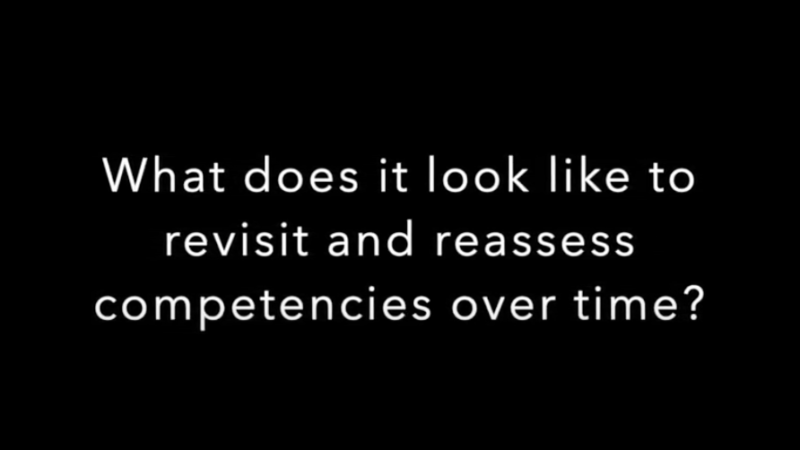CBL in Action: What does it look like to revisit and reassess competencies over time?
One of the critical elements of competency-based learning (CBL) is the idea that students progress based on evidence of mastery, not seat time. What this requires for schools is a transition from a time-based system to a performance-based system. Most schools operate on a system of Carnegie Units where students earn credit by spending a certain amount of time in a particular course. CBL calls for a performance-based system in which students advance based on their ability to demonstrate that they have learned a skill.
In practice, this means that students in CBL environments need multiple opportunities to work on learning outcomes to demonstrate their progress towards mastery. Those demonstrations of learning may occur inside or outside of the classroom, but one thing is clear: time needs to be restructured to offer students more opportunities for practice and reflection. This means that educators need to intentionally design their courses with the idea that a set of competencies will be revisited and reassessed multiple times. Reassessment is not the same as a retake; rather, it’s the idea of learning as a recursive process that serves to spiral back and strengthen the connection between our working and long-term memory.
One of the challenges that educators beginning their CBL journey experience is not taking stock of how much time is actually needed to revisit and reassess competencies. Part of the reason for moving towards a performance-based system under CBL is to acknowledge that students learn and build competencies at different rates; therefore, it’s critical for relevant learning outcomes to be reassessed regularly over the course of several different assessments.
In the video below, we hear from GOA Psychology teacher and Metairie Park Country Day School Head of Counseling, Lauren Gehman, LCSW, BACS. Lauren outlines in detail how each unit of her psychology course circles back to one of the three course competencies and the various ways in which she assesses students’ understanding of that competency. The emphasis on the competencies provides Lauren and her students with a clear focus that serves to inform both Lauren’s planning and outlining for each unit and her students’ reflection on their learning.

